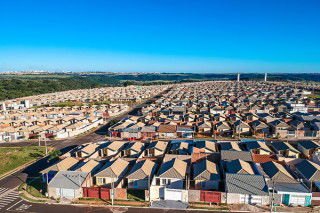Daniel Gauthier, CEO Western Europe-Africa and Member of the Managing Board of HeidelbergCement, has been elected as President of CEMBUREAU for a two-year term at the Association's General Assembly held yesterday in Oslo (Norway) after having completed his mandate of Vice-President over the last two years. He takes over from Peter Hoddinott, Executive Vice President Performance and Member of the Executive Committee at Lafarge. In addition, Gonçalo Salazar Leite (CEO Secil) has been elected as Vice President of CEMBUREAU for a two-year term.
Upon his election, Daniel Gauthier outlined his priorities in his role as President, stating that “the industry must now build upon the accomplishments of “The Concrete Initiative”” which was launched one year ago. “Concrete is essential to Europe’s future providing the buildings and infrastructure which society needs, as well as growth and jobs. The circular economy, competitiveness and climate change will also remain at the forefront of CEMBUREAU’s activities.”
“With the election of Daniel, CEMBUREAU and the priorities of the European Cement Sector are in excellent hands”, added Peter Hoddinott. “He will advance and reinforce the agendas of putting the cement industry forward as a solution provider, where concrete can fulfil both the aspirations of the end users of construction and act as a partner in fulfilling the needs of policymakers”.
“I take this opportunity of thanking Peter Hoddinott for his commitment to the Association over the last two years” stated Mr Koen Coppenholle, CEMBUREAU Chief Executive. “We are now at a turning point: after a protracted period of negative growth, Europe is getting back on its feet. Indeed, our 2014 Activity Report, published today, shows some glimmers of hope for our sector.”
Compared to 2013, 2014 cement production in the CEMBUREAU Member countries saw a very moderate recovery, rising by +0.3 per cent reaching 235.5Mt, after the drops recorded in 2013 and 2012 (-1.4 per cent and -8.2 per cent, respectively) and having fallen by 27 per cent since 2007, the association notes. It highlights that developments in cement demand were in line with the upturn in the general economic and construction environment, particularly over the second half of the year, reflecting somewhat improved sentiment and activity, despite tight budgetary conditions in many Member States.

Brazil’s cement market contracts in August
Cement sales in Brazil slipped 2.5 per cent to 6Mt in August 2025 from 6.154Mt in August 2024, a...